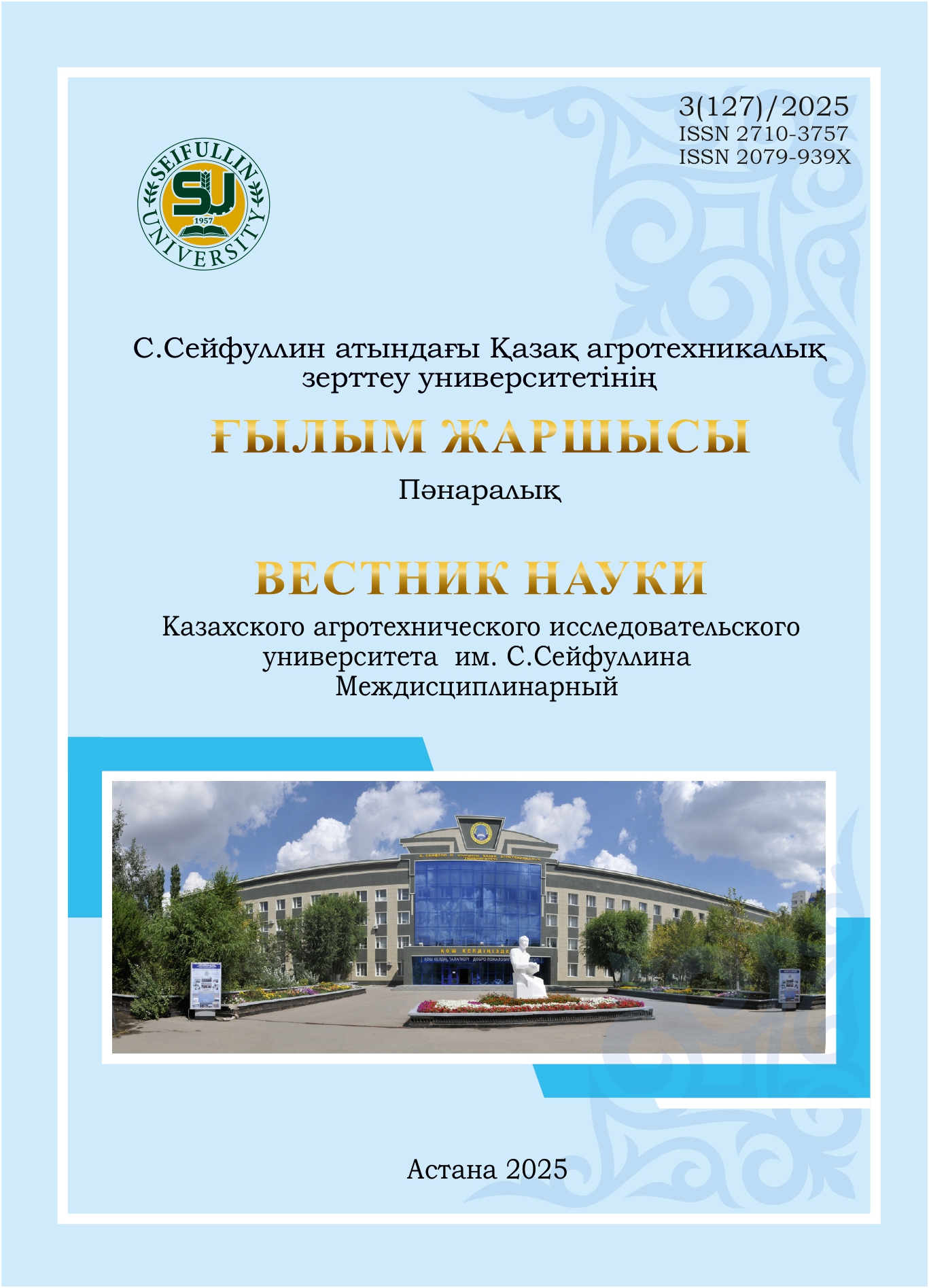The results of embryo flushing in Kazakh short-tailed coarse-haired sheep
DOI:
https://doi.org/10.51452/kazatu.2025.3(127).2032Keywords:
sheep; donor; oocyte; embryo; vitrification; freezing.Abstract
Background and Aim. Recently, the introduction and further development of innovative technologies has become a pressing issue for production and economic entities. One of the priority areas is the transplantation of embryos from elite animals with high productive potential. The aim of this research was to preserve valuable genetic material from Kazakh fat-rumped coarse-wooled sheep for further breeding.
Materials and Methods. The research was conducted on ewes of the Kazakh fat-rumped coarsewooled breed at the "Medkhan" farm in the Almaty region, in the laboratory of biotechnology of sheep reproduction at the Research Institute of Sheep Breeding named after K.U. Medeubekov, a Branch of the Kazakh Research Institute of Animal and Fodder Production LLP. To induce superovulation in donor ewes the hormonal drugs Follimag and Folltropin were administered. Ovarian response and embryo flushing in donors were achieved via laparotomy. Embryo cryopreservation in 0.25 ml straws was performed using a Cryologic CL8800 freezer (Australia), and embryo vitrification was performed using a new method. Ovarian response to hormonal treatment was assessed by laparoscopy. Embryo flushing by donor ewes was performed by laparotomy. Cryopreservation of embryos in 0.25 ml straws was performed using a Cryologic CL8800 freezer (Australia), and embryo vitrification was performed using a new method.
Results. Superovulation was successfully induced in 38 donor ewes, yielding 107 flushed embryos, of which 93 embryos at the morula and blastocyst stages were cryopreserved and vitrified in 0.25 ml straws. The embryo flushing rate was 45%. To assess the quality of the frozen embryos after 2 months, 6 straws were thawed. In two straws frozen using the Cryologic CL8800 program freezer, the intracellular contents of the embryos were destroyed, and the survival rate was 20%. Of the three straws containing vitrified embryos, one straw was unusable, and the survival rate for vitrified embryos was 40%.
Conclusion. Administration of the hormonal drug Follimag at a dose of 7 ml resulted in superovulation in 65.3% of donor ewes, while Follitropin at a total dose of 9 ml resulted in superovulation in 50.0% of donor ewes. The ovarian response to Follimag was 15.3% more effective compared to Follitropin. A total of 107 embryos were flushed, of which 93 embryos at the morula and blastocyst stages were cryopreserved. Embryo flushing rate was 45%. The findings demonstrate that the vitrification method for sheep embryos reduces the cost of consumables and is practical for field application.

